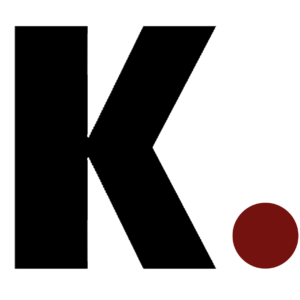How to quickly create an effective marketing plan.
Why I need structure. And so do you.
Seán Walsh – After the initial excitement and enthusiasm of the new project, that new podcast, video series, or social campaign turns out to be harder than expected. The idea was good. But why don't people click? Do you recognize this? Like many marketers, I am a visual thinker. As soon as I get a question, I quickly have a picture in my head of the possible end result. That's great, but at the same time a huge pitfall. That's why I need structure. And so do you.
Before I started Koekepeer I worked for 10 years as a reporter and programme maker for news programmes. At Radio 1, BNN-Vara, Llink and various regional broadcasters. Radio, TV, online. Editorial meeting in the morning and then making a report in the afternoon. On the road every day. Interviewed thousands of people; from the prime minister to people sleeping under the bridge. A new story every day.

Zoom out
My background in journalism has required me to learn marketing through conversations with peers and leaders of the organizations we work for, through reading, doing, and bumping my nose several times.
I think marketing is often made unnecessarily complicated. With many English terms, new technology and hundreds of marketing books. While in essence it is very simple: encouraging people to take action.
Overview
Let's zoom out to how we can make the entire marketing process as simple as possible. One of the clearest marketing books I've read lately is 'The 1-page marketing plan' by Allan Dib. In the book he zooms out and outlines a simple blueprint of the entire marketing process in 9 steps. The book is written for entrepreneurs (who develop their own marketing strategy), but the principles can also be applied as a marketing team.
“Think of your marketing plan as the architect's blueprint for getting and retaining customers.”
Allan Dib – Author of the book 'The 1-Page Marketing Plan'
Creating the plan can be done within an hour and immediately provides a clear overview. Of course, you can make it as extensive and detailed as you want. What I like about it is that you can use it for an entire organization, but also with a few adjustments, for a single campaign.

The 9 steps
1. The market
At the beginning of every project the question arises 'who is it for'? I often hear that the target group is very broad. The problem is that it costs a lot of money to reach everyone. In addition, it is often more effective to first focus on a smaller, defined target group that you really know well instead of going for the masses. If you are smaller than Coca-Cola or Microsoft, it is a better strategy to choose a playing field where you can win.
2. The message
What problem are you solving for whom? It's a simple question, to which you would prefer a simple answer. You then translate the core message in a creative way into the campaigns.
3. Campaigns:
There are four core ways to get your message out to your market.
– 1 on 1, acquaintances: Warm acquisition, think of conversations, telephone calls, newsletters, etc.
– 1 to many, acquaintances: Social media, events
– 1 on 1, unknown: Cold calling, networking, trade fairs
– 1 to many: unknown: Paid advertisements
Most organizations use all four ways to approach their target audience. The campaigns we create are mainly focused on social media, paid ads and events. Initially, it is about building an emotional connection with people who do not know you yet. If you are also relevant, it is logical that people are interested in more.
4. Interest:
If there is interest, you want to capture leads to warm them up. Building pipelines and setting up a CRM system properly is an expertise in itself. If you need support with this, we have a great partner who builds these types of systems.
5. Warm up: How do you use content to warm up your leads? Think of expert videos, testimonials, podcasts etc. The most important thing is that it is relevant to your leads.
6. Sales: How does your sales work? Can you remove barriers? Is it a system, or does it depend on the person?
7. Product: How do you ensure a “world-class” customer experience?
8. Customer Value: How do you retain customers longer and sell more?
9. Recommendations: How can your clients bring in new customers? If it is a campaign, how do you increase the chance that people who see the campaign will forward videos to friends and colleagues?
A good conversation
Usually, the organizations we work for already have an extensive strategic and marketing plan. In that case, this framework helps me to see at a glance how the strategy fits together.
The best conversations are those where I can use the 'old journalist' again. Asking questions about how well you really know your target group. Whether the message can't be sharper. What your brand really stands for. How the proposition works. Why people decide to become a customer or not, how much time and money that costs. How people talk about you and whether they share your content, or whether they recommend you. Getting to the core starts with curiosity, solving the puzzle comes after that.

Inspiration: check out this anti-money laundering campaign for Deloitte
What we can do for you
Our foundation is creating authentic campaigns that cut through the noise. Of course, we can also help you and your team create the marketing plan. Our expertise lies primarily in steps 2, 3 and 5.
We also believe that marketing teams can do a lot themselves. That's why we help you and your team - if there is a need - to easily create good videos yourself. For support with the other steps, we work together with great partners.
Next step
The next step is up to you. As far as I'm concerned, the book is a must. But, the system is fairly simple. Of course, you can also use the principles from this blog. For us, it has helped our own marketing, and also in sharpening the delivery of our product. For example, we started working with a customer portal to remove barriers in the experience of our customers. The most important thing is that it teaches us to keep strategy simple. A 1-page marketing plan is a very good tool for that.
Want to know more? We're happy to help you get started.

